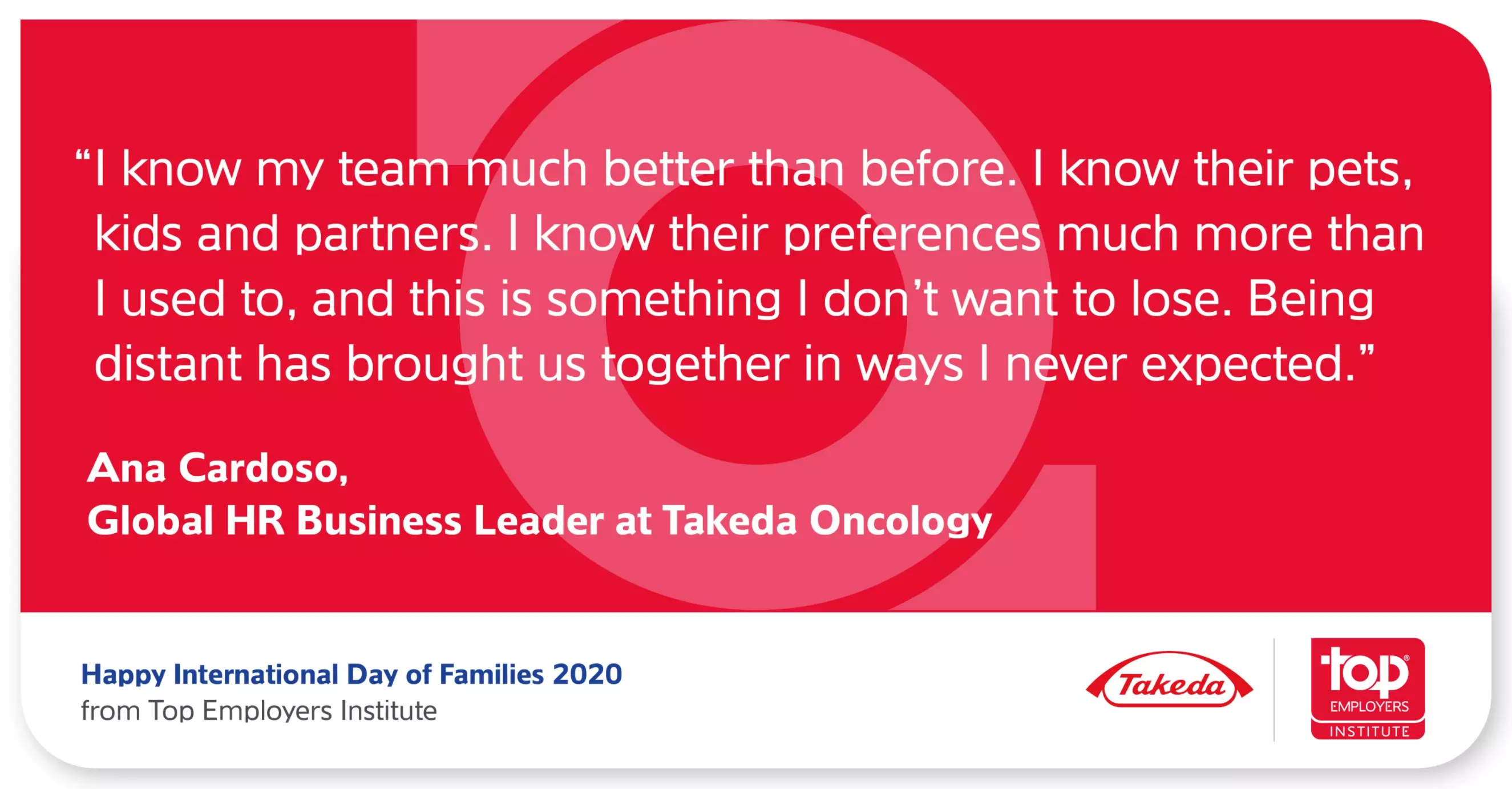
Returning to the workplace: questions to consider
The key decisions made in the coming weeks will determine not only the layout and logistics of workplaces around the world, but also the definition of what work really means for us all for years to come. The questions HR faces are many and varied, though some common challenges are now emerging.
In-person or virtual: which will be the default setting?
Many organisations, albeit under the duress of a public health crisis, have discovered that at least some parts of their operations can continue effectively without the need for regular in-person meetings and an ongoing physical presence in the office.
Before the pandemic took hold, research among our 1 600 Top Employers worldwide revealed that 56% offered remote working. The imperative created by the health crisis may have changed the perspective of HR leaders. Many will be reassessing whether those who used to come into the workplace daily, or at least routinely, actually need to do so.
As a Top Employer, Infosys, for example, underwent a massive remote working programme, moving 97% of its 240,000 employees to home working within a three-day period. Having done so successfully, it now believes that there will be a need to re-structure workplaces and reconfigure the way employees work. For HR, this means a readiness to digitise every aspect of work, and to show digital fluency to plan and help deliver the changes needed.
We’ve seen that many Top Employers find virtual meetings are proving effective, and with face-to-face meetings now causing both physical and psychological health concerns, it’s becoming arguably preferable. Certainly, the previously commonly held belief that face-to-face is better can no longer be taken for granted.
Is more space, less space or a new space needed?
Business leaders are discovering another new challenge, borne from their employees’ sense of safety clashing with the physical realities of the office or factory to which they are returning.
There will be challenges on both sides: Employees who return to a workplace will face restrictions around their physical movement and behaviour. Employers, meanwhile, will face the reality that they either need more space to accommodate their employees comfortably or accommodate a rotational plan with fewer employees in the same space at any given time. Other organisations may look at this time as an opportunity to use less office space by turning working at home from an emergency response into a long-term strategy. Whether the need is for more or less office space in future, all businesses will need to consider whether their workplace setting remains fit for purpose.
Flexibility: how far do we go?
The enforcement of working from home for many organisations has given a new impetus for flexible working. Working from home has proved effective, or at least manageable, for many and now the return to work presents fresh challenges on all sides, with an emphasis on inclusivity during a complex period of change to come. For employees with caring responsibilities the short-term picture at the very least is complex and very personal to their situation. For example, those with school-age children will all have their individual circumstances to manage around the timing of the re-opening of schools. They will need “full-on” flexibility from their employer to help them cope.
Employers, too, need to look afresh at flexibility to make sense of “what socially distanced” workplaces of the future will actually look and feel like. For those returning to their workplace, staggered shifts may become a necessity. Many businesses may have to ask employees to work unusual hours in ways they hadn’t previously imagined, if they are to keep to rules around social distancing.
How do we facilitate employee mental health and well-being?
One heartening feature of the lockdown in many countries has been the high level of compliance among the population, with the need for restraint clearly understood. Now, with the return to workplaces coming into effect, employees will need to be supported and guided, particularly around getting to and from work and the social conditions waiting for them in the workplace. Given the relative safety and convenience of working at home for some professions, it is understandable that many workers are nervous.
One of our Top Employers has revealed that they have radically increased the number of mental health first aiders in their workplace in readiness for this, with a focus on limiting stress and building resilience and mental well-being for those who need to return.
The experience of Saint-Gobain in China may also offer a glimpse of how to mitigate employee anxiety. Its employees are returning to work slowly, albeit with the focus firmly on health and safety. For example, all employees have their temperature checked every day. And at production plants, employees are no longer allowed to eat together or sit face-to-face with each other. Any workplace face-to-face meetings are either conducted virtually or held in meeting rooms large enough to allow for social distancing.
How can we ensure authentic (and frequent) communication remains?
One positive feature among many Top Employers we surveyed been a positive increase in internal communications. Leaders have shown far greater willingness to communicate via frequent briefings - and in a genuine, authentic and personable way. And teams have been increasing their daily levels of communication not just around their work but also how they have been feeling during the lockdown.

Those leaders and teams that have embraced a different style of communication are more likely to reap the benefits through higher engagement, so the big challenge now is to turn great communication into a sustainable norm. For example, SAP Belgium moved quickly to ramp up its leadership and management communications during the sudden transition to working from home. And during the planned move back towards a return to work, it has banned the terms “COVID-19” and “Corona” from its communications in favour of a “business-as-usual” approach, with an emphasis on practical and reassuring content around health, training and the engagement of returning employees.
Final Thought: A new challenge for HR
Before the onset of the COVID-19 pandemic, the principle challenge ahead for many in the HR profession was how to become an effective catalyst for transformational change. Today, it is fair to say that the pandemic has been an unexpected catalyst, albeit through adversity, for accelerated transformational change to all organisations. Leading organisations who strive to create for a better world of work are in a strong position to facilitate a seamless return to the workplace, despite the challenges we all face.
In the process, many HR professionals have likely achieved more internal change in a short space of time and under extreme pressure than they perhaps thought possible. The new HR challenge now is to show the pro-active imagination, and at pace, to excel in facing up to the many challenges of a large-scale return to work.